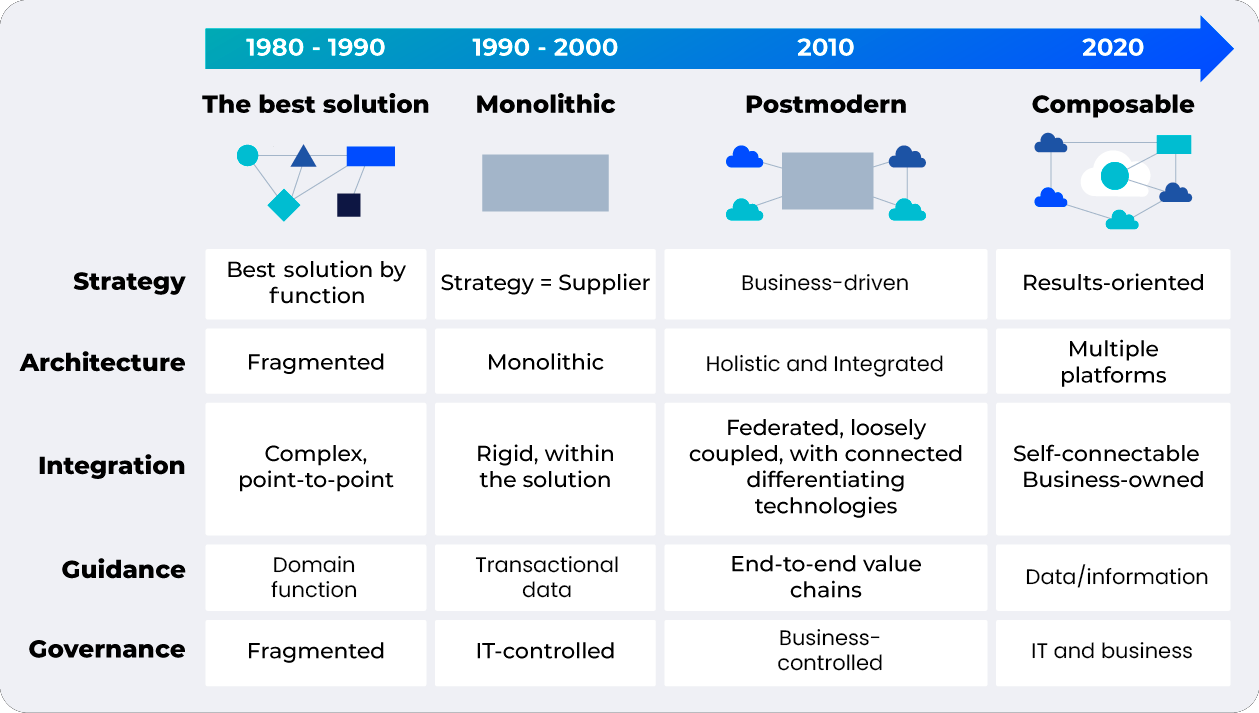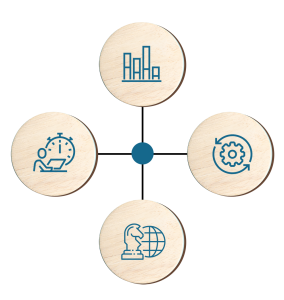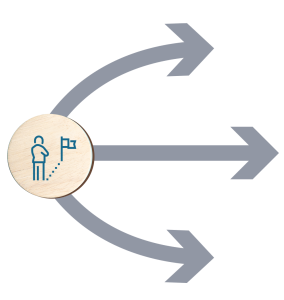
Portfolio Management with SAFe®: how to make It work in practice?

Artificial Intelligence in the insurance sector
Upgrading an ERP (Enterprise Resource Planning) system can be one of the largest and most expensive decisions an organization makes, as well as a determining factor for its operational model over the next decade. Even so, the ERP software market continues to show significant year-over-year growth. Migrating an ERP goes far beyond simply adopting a new technology; it is a fully strategic decision that can define a company's level of operational efficiency and adaptability.
ERPs have evolved beyond their initial scope and purpose, which focused on resources and planning. Today, these applications must prioritize data, information, and process agility, while also being capable of responding to a volatile and uncertain environment.
Historically, leaders sought to maximize the value of their ERPs by utilizing all available functionalities within a single system suite, making the solution highly customized, complex, and costly to maintain and upgrade. The growing need for agility and flexibility is prompting IT leaders to reconsider this strategy and adopt a multi-component ecosystem that enables better business adaptability and composition, fostering innovation.
The four Eras of ERPs

Source: ERPs Emerging Fourth Era — Moving Beyond Postmodern ERP, Gartner, 2019
Most companies plan to modernize their ERP by defining a strategy driven by its business value. Evaluating the current architecture and understanding how business capabilities are being supported by the ERP, as well as the costs and benefits of future possibilities, is essential to ensure this value. However, in most organizations, this agenda is still led by the IT department, when in fact it should be a business decision requiring sponsorship and participation from the CEO and the executive leadership.
Given the importance and scale of this topic within organizations, it is crucial that the migration decision is well-founded and supported. Below, we outline the key factors to consider on this journey, which will be reflected in the construction of a Business Case.
What to consider when making the decision?

1. Understand the company's context and strategic drivers
The first step is to assess the organization's current context and strategic drivers, identifying factors that may influence a potential ERP replacement or upgrade. Key considerations include:
- Loss of support for the current ERP version.
- Initial public offering (IPO).
- Creation of new business models.
- Aggressive expansion strategy.
- Loss of market share.
- Organizational restructuring, mergers, etc.
These are significant factors that should be identified and analyzed during the decision-making process. Additionally, it is crucial to involve the company's entire management team in this discussion to ensure a systemic view of the context.

2. Assess risks and costs of the current ERP
To better understand the current state, it is crucial to conduct interviews with both business and technology areas. These interviews should identify the business risks associated with the use of the current technology, evaluating potential financial losses, system evolution challenges, operational and information security risks, efficiency losses, and more.
Additionally, for building the Business Case, it is essential to map all costs associated with the current solution, including licensing, support, and maintenance expenses, as well as future investment estimates for upgrades to the existing ERP.

3. Identify business capabilities and system coverage of the technological architecture
ERP discussions should focus on business capabilities and competencies rather than specific vendors. Therefore, business competencies must be mapped to understand how the current ERP supports them, which processes are natively covered by the solution, which specificities required system customization, and which competencies are not technologically supported by the existing architecture.

4. Define possible future scenarios
Naturally, the first possible scenario would be to continue with the current ERP. In this case, it is essential to consider what improvements would need to be made to the solution itself and the technological architecture to align with the business's future vision. Beyond this, it is a good practice to consider two or three additional scenarios for evaluation, which can be defined through market research and benchmarking with industry peers.
While many companies begin such projects with a predetermined future solution in mind, this opportunity should be used to conduct a thorough and comprehensive study. This approach ensures that all viable options are explored before making a final decision.
Building the Business Case
History is full of organizations that implemented an ERP solution and ended up disappointed with the results. Creating a Business Case not only helps with decision-making but also guides the pursuit of benefits, making it an effective tool to mitigate this risk.
To build the Business Case, it is crucial that all the factors mentioned above are considered and, where possible, quantified. This tool should identify the business drivers for changing the ERP, as well as provide a scenario analysis that includes advantages, disadvantages, costs, expected returns, and risks for each option. In the case of an ERP replacement, the organization should also have a clear understanding of the complexity and risks involved in the implementation process and the organizational changes that will be required.
Conclusion
Take advantage of this deep dive into your operations and remain attentive and open to improvement opportunities that may arise along the way. We have supported several clients who, during this journey, realized, for example, the need to intensify ERP training for business areas, redesign their processes focusing on optimization, or even review their entire system architecture, thinking not just about the ERP, but about their entire technological ecosystem.
An ERP change is often seen as a risky, costly, and lengthy project. In this scenario, the key to ensuring the expected results and delivering real value is maintaining a strategic focus, involving all stakeholders, seeking expert advice when necessary, and being open to embracing change.
If you want to learn more about how Bridge can support you on this journey, feel free to contact us so we can continue this conversation.
